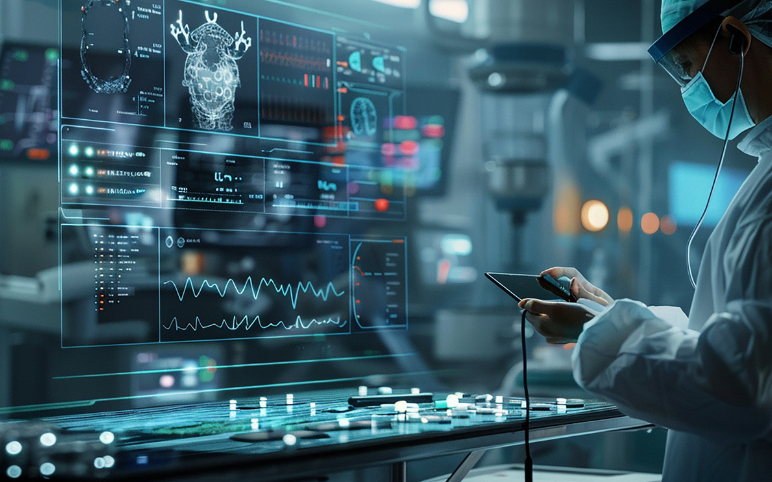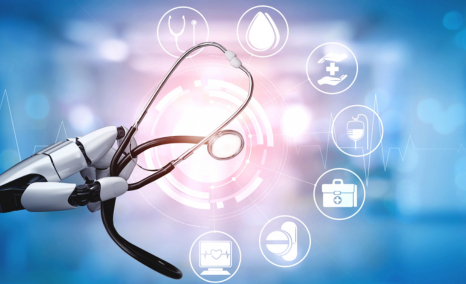The new Unity VCS and Unity CS systems provide notable workflow enhancements over Alcon’s current leading technologies, the CONSTELLATION® Vision System for eye surgeries and the CENTURION® Vision System with ACTIVE SENTRY® for cataracts.
Alcon tested Unity VCS and Unity CS with over 200 experienced surgeons from more than 30 countries during advisory wet lab sessions. Now, with 510(k) clearance, Alcon will start gathering real-world feedback before launching commercially in 2025. Regulatory submissions will continue worldwide in 2024, with CE Mark approval expected in early 2025.
The new Unity VCS and Unity CS systems from the Alcon Vision Suite help Eye Care Professionals enhance efficiency and patient care. Backed by Alcon’s training and services teams, these innovations will be followed by more Unity products, while Alcon’s legacy products remain in use and serviceable.
“I have been closely involved in the development of Unity VCS and Unity CS; this truly innovative system is a significant upgrade of Alcon’s best-in-class technologies,” said Steve Charles, MD, FACS, FICS, FASRS. “It is a proud moment to be able to celebrate this clearance.”
As per DelveInsight’s “Ophthalmic Devices Market Report”, the global Ophthalmic Devices Market was valued at USD 55.91 billion in 2023, growing at a CAGR of 4.12% during the forecast period from 2024 to 2030 to reach USD 71.23 billion by 2030. The demand for ophthalmic devices is primarily being boosted by the rising prevalence of myopia and the growing geriatric population base which resulted in the increased prevalence of ocular diseases of different etiologies, an increasing number of ophthalmic surgeries, and technical innovation in product development which are expected to increase in the product demand thereby contributing in the growth of the ophthalmic devices market during the forecast period from 2024 to 2030.
Globus Medical Received FDA Clearance for its Advanced Orthopedic Robot Which is Set to Revolutionize Total Knee Arthroplasty (TKA)
On June 21, 2024, Globus Medical achieved FDA clearance for its ExcelsiusFlex orthopedic robot, enhancing stereotaxic surgery capabilities in knee procedures, alongside an expanded indication for its ExcelsiusHub system.
“We are excited to have received 510(k) clearance by the FDA for ExcelsiusFlex with Total Knee Arthroplasty (TKA) application,” the spokesperson said in an email. “This new robotic navigation platform joins the already best-in-class Excelsius Ecosystem, designed to offer surgeons enhanced control, resection accuracy, and procedural flexibility to Total Knee Arthroplasty.”
“ExcelsiusFlex is indicated to assist the surgeon in primary total knee arthroplasty procedures for guided resections based on implant placement planning,” she continued. “Multiple workflows and unrestricted jig-less resections restores control of the saw and the procedure to the surgeon. Streamlined user software enable efficient procedures.”
Globus Medical had received FDA clearance for its ExcelsiusFlex orthopedic robot, using Excelsius GPS as the primary 510(k) predicate and citing four additional predicates: ExcelsiusHub, AQrate Robotic Assistance System, Stryker’s Mako Total Knee Application, and Johnson & Johnson Medtech DePuy Synthes Velys Robotic-Assisted Solution. The ExcelsiusFlex system integrates a robotic positioning arm with real-time surgical navigation and guidance through patient tracking arrays and a positioning camera, facilitating precise implant placement planning and intraoperative anatomical tracking based on CT images or direct anatomical structures. This clearance also expands ExcelsiusHub’s indication to include orthopedic device planning. Globus Medical’s knee reconstruction implants, such as the Gen-Flex/GenFlex2 and Actify total knee system (recently FDA-cleared), are compatible with the ExcelsiusFlex platform, further enhancing its utility in orthopedic surgeries.
As per DelveInsight’s “Total Knee Arthroplasty Market Report,” the global total knee arthroplasty market is estimated to grow at a CAGR of 4.8% during the forecast period from 2024 to 2030. The demand for total knee arthroplasty is being boosted by the increasing prevalence of arthritis and knee osteoporosis, growing preference for bicruciate retaining total knee revision, and increase in product launches across the globe which are driving the market growth during the forecast period from 2024-2030.
UK Clinical Trial Made History With First Child Receiving Skull-Mounted Epilepsy Device
On June 24, 2024, Great Ormond Street Hospitals for Children announced that first UK trial of Deep Brain Stimulation for children with epilepsy began. Thirteen-year-old Oran had become the first patient in the UK to undergo a clinical trial using deep brain stimulation (DBS) for epilepsy treatment. Since the procedure, his daytime seizures have reduced by 80%, greatly improving his quality of life.
At GOSH, surgeons had mounted a rechargeable device to his skull, attaching it to electrodes deep in the brain to decrease seizure activity. Many family members had the SCNIB gene mutation and managed their seizures, but Oran’s epilepsy worsened. In October 2023, Oran underwent surgery to implant the device, which was activated in December. Since then, his seizures reduced, and his quality of life significantly improved.
Deep Brain Stimulation (DBS) involves inserting a small device to stimulate brain regions. Unlike chest-mounted DBS devices, this skull-mounted device reduces the risk of lead breakage as the child grows. Rechargeable through headphones, it avoids repeated surgeries. Professor Tim Denison from the University of Oxford highlighted its success with the first child recipient, Oran, targeting the thalamus to block seizures. Funded by the Royal Academy of Engineering and sponsored by UCL, the CADET Pilot involves collaborations with GOSH, UCL, King’s College London, the University of Oxford, and Amber Therapeutics. The next trial phase will be funded by GOSH Charity and LifeArc.
Martin Tisdall, Consultant Paediatric Neurosurgeon at GOSH and Honorary Associate Professor at UCL, said: “Every single day we see the life-threatening and life-limiting impacts of uncontrollable epilepsy. It can make school, hobbies or even just watching a favorite TV show utterly impossible. For Oran and his family, epilepsy completely changed their lives and so to see him riding a horse and getting his independence back is absolutely astounding. We couldn’t be happier to be part of their journey. Deep brain stimulation brings us closer than ever before to stopping epileptic seizures for patients who have very limited effective treatment options. We are excited to build the evidence base to demonstrate the ability of deep brain stimulation to treat pediatric epilepsy and hope in years to come it will be a standard treatment we can offer.”
According to DelveInsight’s “Neurology Devices Market Report”, the global neurology devices market is estimated to grow at a CAGR of 7.46% during the forecast period from 2024 to 2030. The neurology devices market is observing optimistic market growth due to factors such as the rise in the number of regulatory approvals for neurology devices across the globe. Further, the increasing cases of head injuries owing to accidents, workplace injuries, and others, and the rise in the geriatric population coupled with the increasing prevalence of neurological diseases are going to increase the demand for various neurological devices across the globe. Additionally, the growing focus on improving the safety, affordability, and usability of neurology devices for end users is further expected to result in appreciable revenue growth in the neurology devices market during the forecast period (2024 to 2030).
The Initiation of a Significant Clinical Trial Begins With the Enrollment of the First Patient, Dedicated to Investigating the Efficacy of 3d Printed Models for Orthopedic Tumor Removal
On June 26, 2024, Ricoh USA, Inc. and Stratasys Ltd. announced the enrollment of the first patient in a pioneering clinical study that aimed to evaluate the use of 3D-printed models for orthopedic oncology. The study assessed the effectiveness of patient-specific 3D printed anatomical models for preoperative planning and tumor excision, comparing them with the conventional standard of care based solely on CT or MRI imaging.
According to Erez Ben Zvi, VP Medical at Stratasys, “The collaboration brings together unparalleled experience and innovation in medical imaging and 3D printing and, if successful, may establish anatomical models as a new standard for patient treatment in tumor removal from bones.”
Gary Turner, Managing Director, Additive Manufacturing, Ricoh USA, Inc., commented, “We are thrilled to co-sponsor this important clinical trial alongside our longstanding partners at Stratasys to further demonstrate the potential impact of 3D patient-specific modeling as well as accelerate adoption of this technology to better serve a broader population.”
The joint research aims to show potential improvements in surgical outcomes, such as reduced blood loss, shorter operating times, and lower risks of complications. It compares clinical results between two groups: one using 3D printed models alongside imaging for tumor excision planning, and another using imaging alone. 3D models enhance presurgical planning by allowing doctors to simulate procedures with life-size replicas of patient anatomy, improving precision and reducing margin errors. This approach benefits both medical practitioners and patients by facilitating clearer communication and better surgical outcomes. The study, involving up to 150 subjects across sites including The Ohio State University Wexner Medical Center and Corewell Health™ in Michigan, is expected to last 12 months.
“Our never-ending mission is to improve patient outcomes, and that starts with preoperative planning,” said Kyle K. VanKoevering, MD Associate Professor, Otolaryngology-Head and Neck Surgery, Ohio State Wexner Medical Center. “We look forward to participating in this study to examine how 3D printed models may help the medical staff better prepare for surgery as well as improve patient education.”
“Being one of the sites to participate in this study puts us on the forefront of demonstrating new technologies that can advance patient care and improve health outcomes,” said Aws Hammad, M.D., clinical faculty of orthopedic surgery at Corewell Health William Beaumont University Hospital. “Addressing the challenges that come along with bone sarcomas and utilizing the power of patient-specific 3D modeling is a significant step in not only patient education but as an aid to surgeons for more precise surgical procedures.”
According to DelveInsight’s “Orthopedic Implants Market Report”, the global orthopedic implants market is estimated to grow at a CAGR of 5.46% during the forecast period from 2024 to 2030. The orthopedic implants market is slated to witness prosperity owing to factors such as the increasing prevalence of orthopedic diseases such as arthritis, osteoporosis, and others, a growing burden of the geriatric population, the rising number of road accidents associated and other injuries, and the growing focus on improving the safety, affordability, and usability of orthopedic implants for people are further expected to result in the appreciable revenue growth in the orthopedic implants market during the forecast period (2024-2030).
Esaote Unveiled the Cutting-Edge Mylab™E80 @Sirm Ultrasound Device For 2024, Setting a New Standard in Imaging Technology
On June 21, 2024, Esaote, a top Italian company in medical imaging, introduced its new MyLab™E80 ultrasound device at the 51st SIRM Congress 2024 in Milan. This event marks a significant collaboration among three major radiology societies, showcasing their first joint Congress under the theme “The Next Generation.”
“The agile and fast MyLab™E80 and its versatile and mobile advanced features embodies our new vision as part of our ongoing commitment to providing high-quality healthcare. We have therefore improved the reproducibility, efficiency and diagnostic accuracy of our ultrasound scanners,” stated Mariagrazia Bella, Marketing Director for Italy. “MyLab™E80 is designed to adapt to any healthcare environment. With five probe connectors and custom configurations, it’s ideal for both routine and advanced examinations. The battery offers autonomous scanning at full power, while the modern touch panel simplifies cleaning procedures, ensuring adaptability even in the most demanding environments.”
Esaote introduced the MyLab™E80 as the flagship ultrasound system in its new E series, designed for professionals tackling intricate clinical scenarios. With intuitive workflow management and advanced A.I. automation, this device ensures precise diagnostics and efficient examinations, delivering high-detail imaging. It also incorporates fusion imaging technology for assessing liver disease and breast lesions.
According to DelveInsight’s “Interventional Radiology Devices Market Report”, the global interventional radiology devices market is expected to grow at a CAGR of 5.23% during the forecast period of 2024-2030. The increase in demand for interventional radiology devices is primarily attributed to the increasing patient pool due to an increasing prevalence of chronic disorders & cancer and due to the increasing number of geriatric patients globally. Interventional radiology devices work on minimally invasive techniques so they involve less severe surgical procedures, thereby leading to a shorter hospitalization period. Thus, the rising demand of the reducing healthcare expenditure across the world is anticipated to bolster the market of the devices. Furthermore, the rising awareness and the demand for minimally invasive techniques and the technological advancements in devices such as illumination rendering technology, real-time images, and others across the world are anticipated to bolster the market, thereby contributing to the growth of the interventional radiology devices market during the forecast period from 2024 to 2030.
Medasense Unveiled a Transformative Partnership With Nihon Kohden Corporation Marking a Strategic Leap Forward in Healthcare Innovation
On June 26, 2024, Medasense, a global leader in pain monitoring solutions, announced a strategic alliance with Nihon Kohden for the exclusive distribution of its state-of-the-art pain monitoring device in Japan. This partnership is set to redefine pain management in Japanese healthcare settings, offering a profound improvement in patient care standards.
Nihon Kohden, renowned for its history of excellence in providing innovative and reliable medical technology that enhances healthcare delivery, collaborated with Medasense to bring its nociception monitor to the Japanese market. This state-of-the-art device, incorporating the AI-powered NOL – Nociception Level Index®, provided real-time, objective pain monitoring, facilitating personalized and optimized pain treatment. Access to the device was planned for hospitals and clinics throughout Japan through Nihon Kohden’s established distribution channels, pending regulatory clearance.
Medasense’s CEO & Founder, Galit Zuckerman, expressed enthusiasm about the collaboration: “We are honored to partner with Nihon Kohden, a company with a long history of excellence, that shares our vision of improving patient care through innovative solutions. Our mission is to help all patients suffer less from pain and the adverse effects of pain medication. Nihon Kohden’s established clinical, technological leadership and expertise in the Japanese market make them the perfect partner to distribute our nociception monitor.”
According to DelveInsight’s “Pain Management Devices Market Report”, the global pain management devices market was valued at USD 4.86 billion in 2023, growing at a CAGR of 7.90% during the forecast period from 2024 to 2030, to reach USD 7.67 billion by 2030. The demand for pain management devices is primarily motivated by the rise in the prevalence of chronic pain, the high prevalence of musculoskeletal disorders, the surge in the geriatric population, the surge in awareness among people toward pain management devices, improved R&D investment to develop innovative products, and increasing cost of healthcare expenditure.



